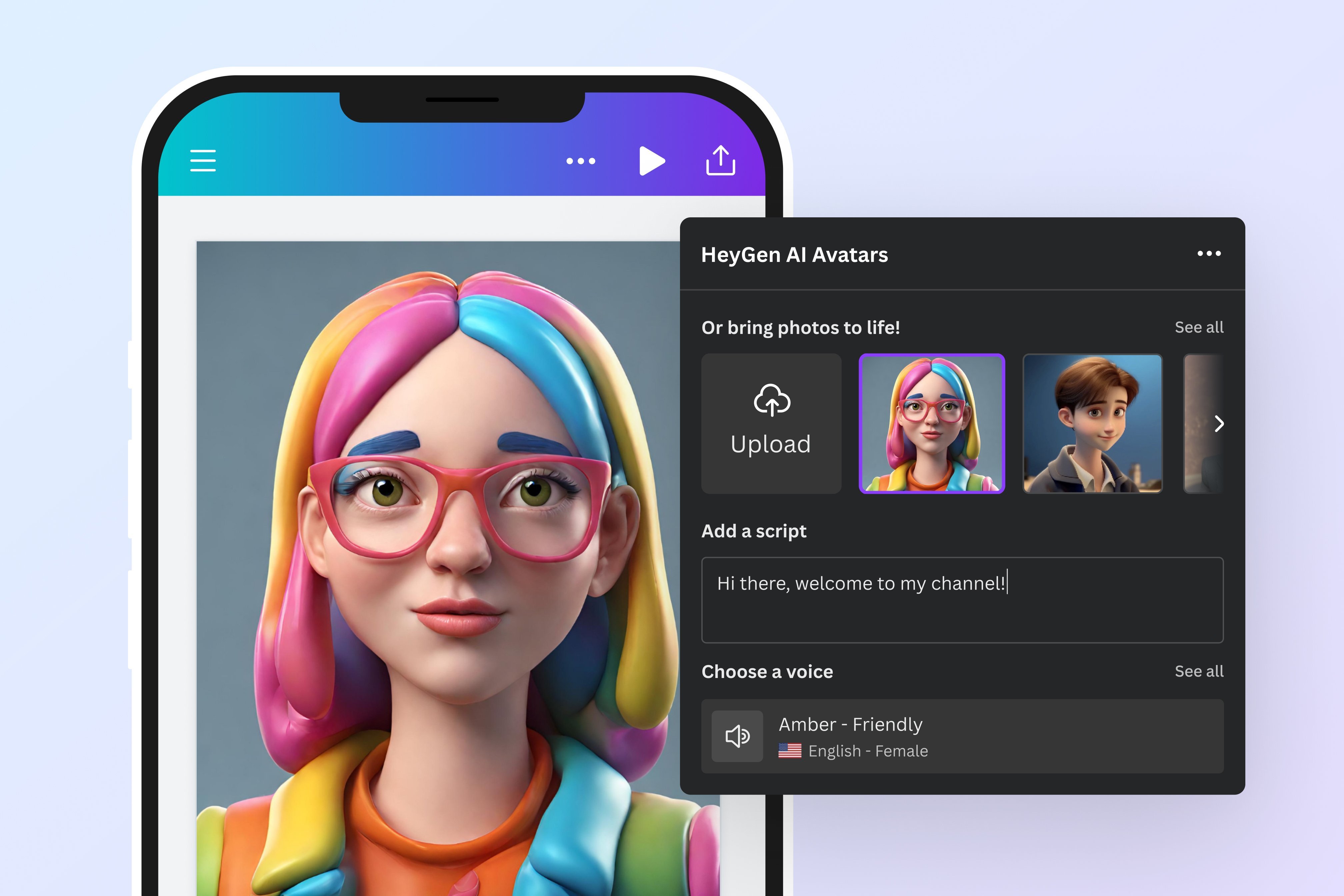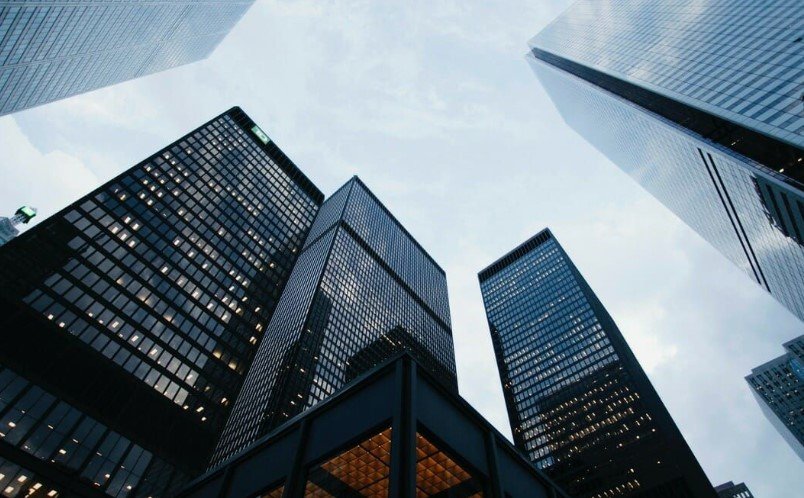An Artificial Intelligence Image Creator generates images based on user inputs using advanced algorithms. It leverages machine learning to create unique visuals.
Artificial Intelligence Image Creators are revolutionizing the way we generate visuals. These tools use sophisticated algorithms and machine learning to produce high-quality images from simple text prompts or existing photos. Artists, designers, and marketers can benefit from the speed and efficiency these tools offer.
They eliminate the need for extensive manual editing and provide a vast array of creative possibilities. AI image creators can also adapt to different styles and themes, making them versatile for various applications. This technology is not only innovative but also accessible, allowing users with minimal technical skills to produce professional-grade images.
What Is Ai Image Creation?
Artificial Intelligence Image Creator tools are revolutionizing the way we generate and manipulate images. These tools use advanced algorithms to create stunning visuals from scratch. But what exactly is AI Image Creation?
Basic Concepts
AI Image Creation involves using machine learning and neural networks to generate images. These systems learn from vast datasets and create new images based on patterns and features they recognize. Key concepts include:
- Neural Networks: These are computer systems modeled after the human brain. They learn from data and improve over time.
- Training Data: Large datasets of images are used to teach the AI how to recognize and create new images.
- Generative Adversarial Networks (GANs): These are two neural networks that work together. One creates images, and the other evaluates them for quality.
In AI Image Creation, the process starts with a simple input. This could be a text description, a sketch, or even another image. The AI then uses its training to generate a new, unique image. This process can take seconds or minutes, depending on the complexity. The result is an image that looks like it was created by a human artist. This technology has applications in various fields, including advertising, entertainment, and education.
Key Technologies
Several key technologies drive AI Image Creation:
- Deep Learning: This is a subset of machine learning. It uses neural networks with many layers to analyze data and make decisions.
- Convolutional Neural Networks (CNNs): These are specialized neural networks for processing images. They can detect and recognize objects within images.
- Style Transfer: This technology lets AI apply the style of one image to another. For example, turning a photo into a painting.
- Natural Language Processing (NLP): This helps the AI understand and generate images based on text descriptions.
Deep Learning enables AI to understand complex patterns in images. CNNs are particularly effective in identifying features such as edges, textures, and shapes. Style Transfer allows for creative flexibility, letting users experiment with different artistic styles. NLP bridges the gap between textual descriptions and visual outputs. These technologies work together to create a seamless and powerful AI Image Creation process.
Types Of AI Image Creators
Artificial Intelligence Image Creators have transformed how we generate and manipulate images. Understanding the different types of AI image creators can help you choose the right tool for your needs. There are two main types: Generative Adversarial Networks and Neural Style Transfer. Each type has unique features and applications.
Generative Adversarial Networks
Generative Adversarial Networks (GANs) are a powerful type of AI image creator. They consist of two parts: the generator and the discriminator. The generator creates images, while the discriminator evaluates them. The goal is for the generator to create images that are so realistic, the discriminator cannot tell if they are fake.
Here are some key features of GANs:
- Realistic Images: GANs can generate highly realistic images.
- Adversarial Training: The generator and discriminator improve each other through competition.
- Versatile Applications: GANs are used in art, gaming, and even healthcare.
GANs have various applications:
| Application | Example |
|---|---|
| Art | Creating unique pieces of digital art |
| Gaming | Generating realistic game environments |
| Healthcare | Simulating medical images for training |
GANs are remarkable for their ability to create images that look incredibly real. They have revolutionized many fields with their innovative applications.
Neural Style Transfer
Neural Style Transfer (NST) is another fascinating type of AI image creator. It involves taking the style of one image and applying it to another. The result is a new image that combines the content of the original with the style of the second.
Key features of NST include:
- Artistic Transformations: Transform ordinary photos into works of art.
- Preserves Content: Retains the main elements of the original image.
- Stylized Outputs: Applies the unique style of another image.
Here are some common uses of NST:
- Photo Editing: Enhance personal photos with artistic styles.
- Advertising: Create eye-catching visuals for marketing.
- Social Media: Generate unique content for social media posts.
NST is popular for its ability to turn any photo into a masterpiece. It opens up endless possibilities for creativity and personalization.
Popular Tools And Platforms
Artificial Intelligence Image Creators have revolutionized the way we generate and manipulate images. These powerful tools leverage advanced algorithms to create stunning visuals, making them invaluable for designers, artists, and content creators. Below, we’ll explore some of the most popular tools and platforms in this space.
Dall-e
DALL-E is an AI image creator developed by OpenAI. It uses a variant of the GPT-3 model to generate images from textual descriptions. This tool has gained immense popularity due to its ability to create highly detailed and imaginative images based on user input.
Key features of DALL-E include:
- Text-to-Image Generation: Users can input a description, and DALL-E generates a corresponding image.
- High-Quality Outputs: The images produced are often of high resolution and quality.
- Versatility: DALL-E can create a wide range of images, from realistic photos to abstract art.
Here is a table summarizing the strengths and weaknesses of DALL-E:
| Strengths | Weaknesses |
|---|---|
| Highly detailed images | Resource-intensive |
| Versatile in style | Requires specific textual input |
| High resolution | Limited accessibility |
Midjourney
Midjourney is another popular AI image creation tool that has caught the attention of many. It focuses on creating images that are not only visually appealing but also emotionally evocative. Midjourney uses a combination of neural networks and deep learning techniques to achieve its results.
Key features of Midjourney include:
- Emotionally Rich Images: The tool excels at producing images that convey emotions and tell stories.
- Customizable Outputs: Users can tweak various parameters to customize their images.
- User-Friendly Interface: The platform is designed to be accessible even to those with minimal technical knowledge.
Here is a table summarizing the strengths and weaknesses of Midjourney:
| Strengths | Weaknesses |
|---|---|
| Emotionally evocative images | Can be less detailed |
| Highly customizable | Limited to specific styles |
| Easy to use | May require some learning |

Applications In Art
Artificial Intelligence Image Creators are transforming the art world. These tools can generate stunning visuals, provide creative inspiration, and even enhance traditional artwork. Let’s explore the fascinating applications of AI in art.
Digital Art
AI is a game-changer for digital artists. It can create unique pieces of art with just a few clicks. Artists use AI to explore new styles and techniques.
Here are some key benefits of using AI in digital art:
- Speed: AI can generate images much faster than humans.
- Variety: AI can create a wide range of styles, from abstract to hyper-realistic.
- Consistency: AI ensures uniformity in art pieces.
Artists can also use AI to find inspiration. These tools can suggest color palettes, compositions, and themes. This helps artists break through creative blocks.
AI tools like DeepArt and Artbreeder are popular among digital artists. These platforms allow users to blend different art styles and create something new.
Below is a comparison table of popular AI digital art tools:
| Tool | Features | Cost |
|---|---|---|
| DeepArt | Style transfer, high-resolution output | Free with premium options |
| Artbreeder | Image blending, customization | Free with premium options |
| DALL-E | Text-to-image generation | Subscription-based |
Traditional Art Enhancement
AI is also enhancing traditional art forms. Artists can digitize their work and use AI to improve it. This includes color correction, adding details, and even repairing damage.
Here are some applications of AI in traditional art enhancement:
- Restoration: AI can restore old or damaged artworks.
- Colorization: AI can add color to black-and-white images.
- Detail Enhancement: AI can add finer details to existing artwork.
AI tools like Adobe Photoshop now include AI features. These tools can analyze an image and suggest improvements. This saves artists a lot of time.
Moreover, AI can help artists experiment with new techniques. For example, an artist can scan a pencil sketch and use AI to add realistic textures and colors.
Below is a list of popular AI features in traditional art software:
- Adobe Sensei: Automated photo editing and enhancements.
- Topaz Labs: AI-driven image sharpening and noise reduction.
- Prisma: AI filters to transform photos into artwork.
These advancements make traditional art more accessible and versatile. Artists can blend classic techniques with modern technology.
Impact On Creative Industries
Artificial Intelligence Image Creators are changing the creative world. They are transforming how people make images. These tools are making waves in many industries. Two major areas feeling the impact are advertising and entertainment. Let’s explore how AI image creators are reshaping these creative fields.
Advertising
Advertising is all about catching people’s eyes. AI image creators help make this happen. They can create stunning visuals quickly. This saves time and money for ad agencies.
Benefits of AI Image Creators in Advertising:
- Cost-effective: Companies save on hiring photographers and designers.
- Speed: AI tools create images in seconds.
- Customization: Tailored images for different audiences.
AI image creators also help with A/B testing. They generate different images to see which one works best. This improves ad performance.
Another benefit is consistency. AI tools maintain a brand’s look across all ads. This helps build a strong brand identity.
Here is a table showing the advantages:
| Advantage | Description |
|---|---|
| Cost-effective | Saves money on hiring professionals. |
| Speed | Creates images quickly. |
| Customization | Generates tailored images. |
| Consistency | Maintains brand identity. |
Entertainment
In entertainment, visuals are key. AI image creators help make amazing graphics for movies, games, and music videos. They bring stories to life with stunning visuals.
Uses of AI Image Creators in Entertainment:
- Movie Posters: Create eye-catching posters quickly.
- Game Graphics: Design characters and worlds fast.
- Music Videos: Produce unique visuals for songs.
AI image creators also help with special effects. They generate lifelike effects for movies and games. This makes the entertainment more engaging.
Another benefit is creative freedom. Artists can experiment with different styles without extra cost. This leads to more innovative work.
Here is a list of AI tools used in entertainment:
- DeepArt
- Artisto
- Runway ML
These tools make the creative process easier and faster. They help artists focus on storytelling.

Ethical Considerations
Artificial Intelligence Image Creators are transforming the way we generate visual content. These tools can create stunning images with just a few clicks. But, they also bring up some important ethical considerations. Let’s explore some of these ethical issues in detail.
Copyright Issues
One major concern is copyright issues. AI Image Creators often use datasets that include millions of images from the internet. These images might be protected by copyright laws. Using them without permission can lead to legal problems. Here are some key points:
- Unauthorized Use: AI tools may use copyrighted images without the owner’s permission.
- Ownership Ambiguity: When AI generates an image, it’s unclear who owns the rights to that image.
- Commercial Use: Using AI-generated images for commercial purposes can lead to lawsuits.
Let’s break down the implications with a simple table:
| Issue | Implication |
|---|---|
| Unauthorized Use | Legal penalties for using copyrighted images. |
| Ownership Ambiguity | Confusion over who owns the AI-generated image. |
| Commercial Use | Risk of lawsuits when selling AI-generated images. |
Artists and photographers often spend years creating their work. Using their images without permission is unfair. It’s important to consider these ethical aspects to avoid legal trouble.
Bias In Algorithms
Bias in algorithms is another significant issue. AI Image Creators rely on huge datasets to generate images. If these datasets are biased, the AI can create biased images. Here are some common biases:
- Gender Bias: AI might generate images that reinforce gender stereotypes.
- Racial Bias: AI could produce images that favor certain races over others.
- Cultural Bias: Some cultures might be underrepresented in the AI-generated images.
Consider these points:
- Quality of Data: Biased data leads to biased outcomes.
- Diversity: Diverse datasets can help reduce bias.
- Transparency: AI developers should be transparent about their data sources.
Bias in AI can have serious consequences. It can perpetuate stereotypes and cause harm. Ensuring diverse and unbiased datasets is crucial for fair AI-generated images. Developers must pay attention to these issues to create ethical and fair AI tools.
Future Of Ai Image Creation
Artificial Intelligence (AI) Image Creators are revolutionizing the way we generate visual content. These advanced tools can produce stunning images from simple text prompts. The future of AI image creation holds exciting possibilities. This technology will transform industries, enhance creativity, and push the boundaries of what is possible.
Trends To Watch
AI image creation is rapidly evolving. Several key trends will shape its future:
- Hyper-Realistic Images: AI will generate images indistinguishable from real photos.
- Customization: Users will tailor images to specific needs and preferences.
- Integration with Other Technologies: AI image creators will integrate with AR, VR, and 3D modeling tools.
- Accessibility: These tools will become more user-friendly and accessible to everyone.
Hyper-realistic images will blur the line between reality and AI-generated visuals. This will impact advertising, filmmaking, and more. Customization allows users to create bespoke images for personal or professional use. Imagine a world where anyone can generate unique artwork with just a few clicks.
The integration of AI image creators with AR, VR, and 3D modeling tools will open new creative avenues. These technologies will work together to produce immersive experiences. Finally, the increased accessibility of AI tools will democratize creativity. Everyone, regardless of skill level, will be able to create stunning visuals.
Technological Advancements
Several technological advancements will drive the future of AI image creation:
| Advancement | Impact |
|---|---|
| Improved Algorithms | Produce more accurate and detailed images |
| Enhanced Processing Power | Faster generation times and higher resolution images |
| Better Training Data | More diverse and realistic image outputs |
| Ethical AI | Address biases and ensure responsible use |
Improved algorithms will enhance the quality of AI-generated images. These algorithms will become more sophisticated, enabling the creation of highly detailed visuals. Enhanced processing power will allow for faster generation times. Users will enjoy higher resolution images without long waits.
Better training data will result in more diverse and realistic outputs. AI models will learn from a wider range of images, leading to more accurate representations. Ethical AI will play a crucial role in the future. Ensuring responsible use and addressing biases will be vital for the technology’s acceptance and growth.
Getting Started With Ai Art
Artificial Intelligence Image Creators are transforming the way we make art. These tools use AI to create stunning images from simple inputs. Getting started with AI Art can be exciting and rewarding. Whether you’re an artist or just curious, AI art opens up new possibilities. Let’s dive into the basics of getting started with AI art.
Choosing The Right Tool
Choosing the right AI Image Creator is crucial. Different tools offer various features. Here are some popular options:
- DeepArt.io: Known for its ability to turn photos into artwork.
- RunwayML: Offers a user-friendly interface and multiple AI models.
- DALL-E: Created by OpenAI, can generate highly realistic images from text descriptions.
When selecting a tool, consider the following:
| Criteria | Details |
|---|---|
| Ease of Use | Look for tools with intuitive interfaces. |
| Features | Check if the tool offers the features you need. |
| Cost | Some tools are free, while others require payment. |
| Community Support | Tools with active communities can be more helpful. |
Try a few tools to see which one fits your needs best.
Tips For Beginners
Starting with AI art can seem daunting, but these tips can help:
- Start Simple: Begin with basic images and simple ideas. Complex projects can be overwhelming.
- Experiment: Don’t be afraid to try different settings and styles. Experimentation leads to discovery.
- Learn from Others: Join online forums and communities. Learning from others can speed up your progress.
- Practice Regularly: The more you practice, the better you’ll get. Make a habit of creating new art regularly.
- Use Tutorials: Many tools offer tutorials. These can help you understand the features better.
Below are some quick tips for a smooth start:
- Save Your Work Often: AI tools can sometimes crash. Save your work to avoid losing progress.
- Keep Your Inputs Clear: Clear inputs lead to better outputs. Avoid overly complex instructions.
- Have Fun: Enjoy the process. Creating art should be enjoyable.
By following these tips, beginners can quickly become proficient in AI art.

Conclusion
AI image creators are revolutionizing the digital art landscape. They offer endless possibilities for artists and businesses. Embrace this technology to unlock your creative potential. Stay ahead in the competitive market by integrating AI tools. Experience the future of image creation with the power of artificial intelligence.


